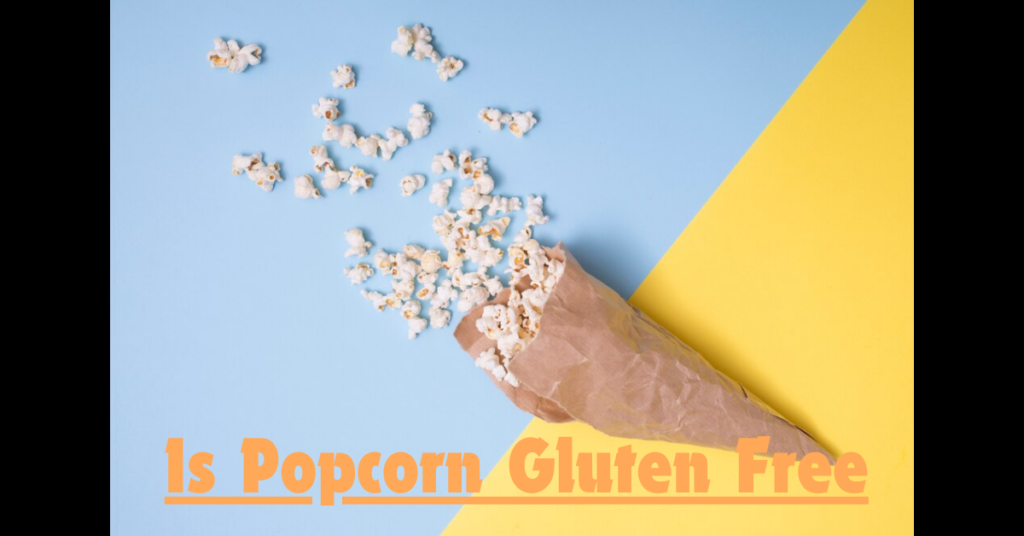Popcorn is a beloved snack enjoyed by millions worldwide. Its light, airy texture and satisfying crunch make it a go-to treat for movie nights, gatherings, and casual munching. However, for individuals with gluten sensitivities or celiac disease, the question of whether popcorn is gluten-free is crucial. In this comprehensive article, we will delve into the gluten-free status of popcorn, exploring its natural properties, potential contamination risks, and considerations for those with gluten-related disorders. Additionally, we will provide insights into safe consumption practices and highlight authoritative references to support our findings.
Understanding Gluten and Gluten Sensitivities
What is Gluten?
Gluten is a group of proteins found in wheat and related grains such as barley, rye, and oats. It gives dough its elasticity, helping it rise and maintain its shape. While gluten is harmless for most people, it can cause serious health issues for those with gluten-related disorders.
Gluten-Related Disorders
Celiac Disease
Celiac disease is an autoimmune disorder where the ingestion of gluten leads to damage in the small intestine. It affects about 1% of the global population. Symptoms include gastrointestinal issues, fatigue, and nutrient deficiencies. The only effective treatment is a strict gluten-free diet.
Non-Celiac Gluten Sensitivity
Non-celiac gluten sensitivity (NCGS) involves symptoms similar to celiac disease but without the autoimmune response or intestinal damage. Symptoms include abdominal pain, bloating, and headaches. A gluten-free diet can alleviate these symptoms.
Wheat Allergy
Wheat allergy is an allergic reaction to proteins found in wheat, including but not limited to gluten. Symptoms can range from mild (hives, nasal congestion) to severe (anaphylaxis). Avoiding wheat-containing products is essential for managing this allergy.
Is Popcorn Naturally Gluten-Free?
Corn: A Gluten-Free Grain
Corn, from which popcorn is made, is naturally gluten-free. It is a member of the grass family, distinct from wheat, barley, and rye. As a result, plain, unprocessed popcorn is inherently free from gluten.
Processing and Preparation
While plain popcorn is gluten-free, the processing and preparation methods can introduce gluten. Contamination can occur at various stages, from harvesting and processing to flavoring and packaging. Understanding these potential risks is crucial for those adhering to a strict gluten-free diet.
Potential Sources of Gluten Contamination
Cross-Contamination During Processing
Cross-contamination can occur when gluten-containing grains are processed on the same equipment as popcorn. Even trace amounts of gluten can cause adverse reactions in individuals with celiac disease or severe gluten sensitivities. Manufacturers that produce both gluten-containing and gluten-free products may inadvertently contaminate popcorn.
Additives and Flavorings
Many commercially available popcorn varieties contain additives and flavorings, some of which may include gluten. Common culprits include:
- Seasonings: Some seasoning mixes contain wheat flour or other gluten-containing ingredients.
- Butter and Cheese Flavors: These can include malt flavoring or other gluten derivatives.
- Caramel and Chocolate Coatings: These coatings may use gluten-containing thickeners or stabilizers.
Packaging and Handling
Packaging materials and handling practices can also introduce gluten contamination. Shared facilities, storage areas, and transportation methods may expose gluten-free popcorn to gluten-containing products.
Safe Popcorn Consumption for Gluten-Sensitive Individuals
Choosing Certified Gluten-Free Popcorn
To ensure safety, individuals with gluten sensitivities should opt for certified gluten-free popcorn. Certification by reputable organizations such as the Gluten-Free Certification Organization (GFCO) ensures that the product contains less than 20 parts per million (ppm) of gluten, meeting strict gluten-free standards.
Reading Labels and Ingredient Lists
Reading labels and ingredient lists is essential for identifying potential sources of gluten. Look for clear indications that the product is gluten-free and check for any allergen statements. Avoid products with ambiguous ingredient descriptions or those processed in shared facilities.
Making Popcorn at Home
Making popcorn at home is a safe and enjoyable way to control ingredients and avoid contamination. Using plain, unflavored popcorn kernels and cooking them in a clean, dedicated popcorn maker or pot minimizes the risk of gluten exposure. Adding gluten-free seasonings or butter ensures a safe, customized snack.
Popular Gluten-Free Popcorn Brands
Several brands offer gluten-free popcorn options, catering to the needs of individuals with gluten sensitivities. Some popular gluten-free popcorn brands include:
- Angie’s BOOMCHICKAPOP: Known for its variety of flavors and gluten-free certification.
- SkinnyPop: Offers plain and flavored options, all gluten-free.
- Popcorn Indiana: Provides a range of gluten-free popcorn products, including kettle corn and cheese popcorn.
- Quinn Popcorn: Focuses on organic, gluten-free popcorn with various seasoning options.
High-Authority References
To provide accurate and reliable information, we refer to high-authority sources in the field of gluten-related disorders and food safety:
- Celiac Disease Foundation: A leading organization dedicated to improving the quality of life for individuals with celiac disease through advocacy, education, and research. Their website provides comprehensive information on gluten-free living and safe food choices. Celiac Disease Foundation
- Gluten Intolerance Group (GIG): GIG is a non-profit organization that supports individuals with gluten-related disorders. Their Gluten-Free Certification Organization (GFCO) is a trusted certifying body for gluten-free products. Gluten Intolerance Group
- National Celiac Association: This organization offers resources, support, and education for people with celiac disease and gluten sensitivities. They provide valuable information on gluten-free diets and safe food practices. National Celiac Association
- Food and Drug Administration (FDA): The FDA regulates food labeling and safety in the United States. Their guidelines on gluten-free labeling help consumers make informed choices about gluten-free products. FDA on Gluten-Free Labeling
- Mayo Clinic: A renowned medical institution that provides expert advice on managing celiac disease and gluten sensitivities. Their website includes detailed information on gluten-free diets and safe food options. Mayo Clinic – Celiac Disease
Conclusion
Popcorn, when plain and unprocessed, is naturally gluten-free, making it a suitable snack for individuals with gluten-related disorders. However, the risk of contamination through processing, additives, and handling necessitates careful selection and preparation. By choosing certified gluten-free products, reading labels diligently, and opting for homemade popcorn, gluten-sensitive individuals can enjoy this popular snack without compromising their health.
Understanding the complexities of gluten contamination and taking proactive measures ensures that popcorn remains a safe and enjoyable treat. With the support of high-authority references and resources, individuals with celiac disease, non-celiac gluten sensitivity, or wheat allergies can make informed decisions and maintain a gluten-free lifestyle.
Also Read: Varch: A Comprehensive Guide to Understanding Its Tokenomics







